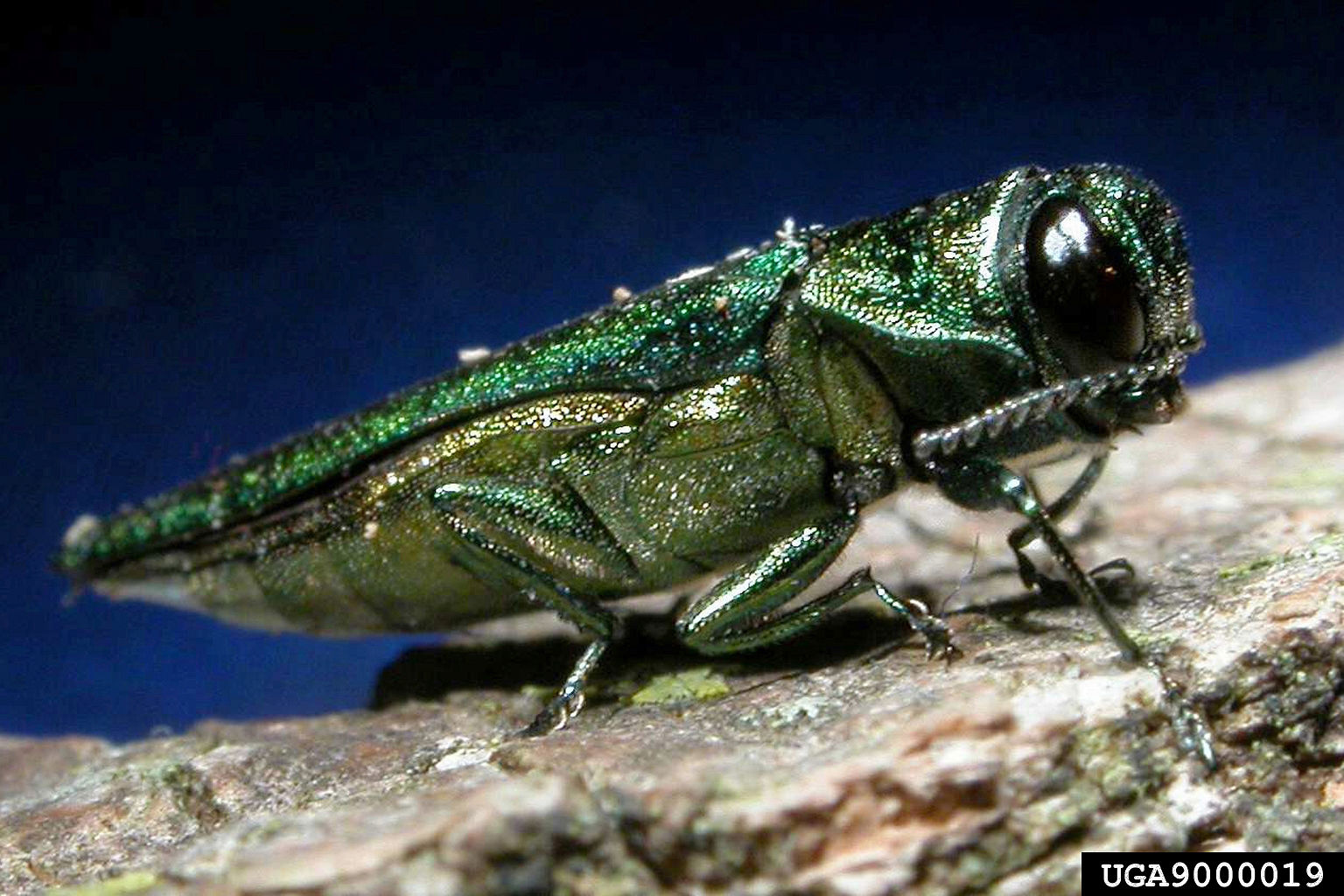Emerald ash borer has been discovered in Mitchell County, Iowa, for the first time. Since its original detection in 2010, the invasive, ash tree-killing insect from Asia has now been confirmed in all but six of Iowa’s 99 counties.
EAB larvae were collected near Spring Park in rural Osage by the Iowa Department of Agriculture and Land Stewardship. Federal identification confirmed the samples were positive for EAB.
EAB is a significant threat to native ash tree species, typically killing a tree within two to four years after becoming infested. The cumulative damage by the larvae (immature stage) feeding on the inner bark eventually kills ash trees. The feeding cuts off the tree’s ability to transport water and nutrients.
Indicators of an infestation may include canopy thinning, leafy sprouts shooting from the trunk or main branches, serpentine (“S”-shaped) galleries under the bark, bark splitting, woodpecker damage, and 1/8-inch D-shaped exit holes.
The State of Iowa continues to evaluate the potential spread of EAB on a county-by-county basis. Before a county can be declared positive, a life stage of the insect must be collected and confirmed. Anyone who suspects an infested ash tree in a county not currently known to be confirmed with EAB is encouraged to contact one of the following:
• Iowa Department of Agriculture and Land Stewardship, State Entomologist Office, 515-725-1470;
• Iowa State University Extension and Outreach, Entomology, 515-294-1101; and
• Iowa Department of Natural Resources, 515-725-8200.

